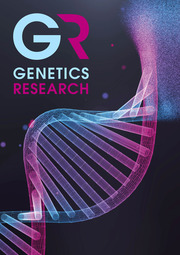Article contents
Models of long term artificial selection in finite population
Published online by Cambridge University Press: 14 April 2009
Summary
The effects of population size and selection intensity, which are in the breeder's control, are investigated for ranges of values of quantities outside his control, namely the number, initial distribution of frequencies and effects of genes influencing the trait. Two alleles are assumed to be initially segregating at each locus, with no linkage, dominance or epistasis. The effects are assumed to follow a gamma distribution, using a wide range of its two parameters which specify both mean gene effect or selective value and the shape of the distribution, or the ratio of Wright's effective number to actual number of genes. The initial gene frequencies (q) are assumed to be either 0·5 at all loci, uniformly distributed over the range 0–1, or to have a U-shaped distribution, proportional to [q(1 − q)]−1 such as derives from neutral mutation, with gene effect and frequency distributions independent. The mean and variance of selection response and limits, in the absence of new mutation, are derived.
The shape of the distribution of effects is not usually important even up to the selection limit. With appropriate parametrization, the influence of the initial frequency distribution is small over a wide range of parameters. For reasonable choices of parameters, the effects of changing population size from those typically used in animal breeding programmes are likely to be small, but not negligible. For the initial U-shaped frequency distribution, further increases in population size are always expected to give a greater limit, regardless of present value, but not for the other distributions.
Information
- Type
- Research Article
- Information
- Copyright
- Copyright © Cambridge University Press 1986
References
- 45
- Cited by

